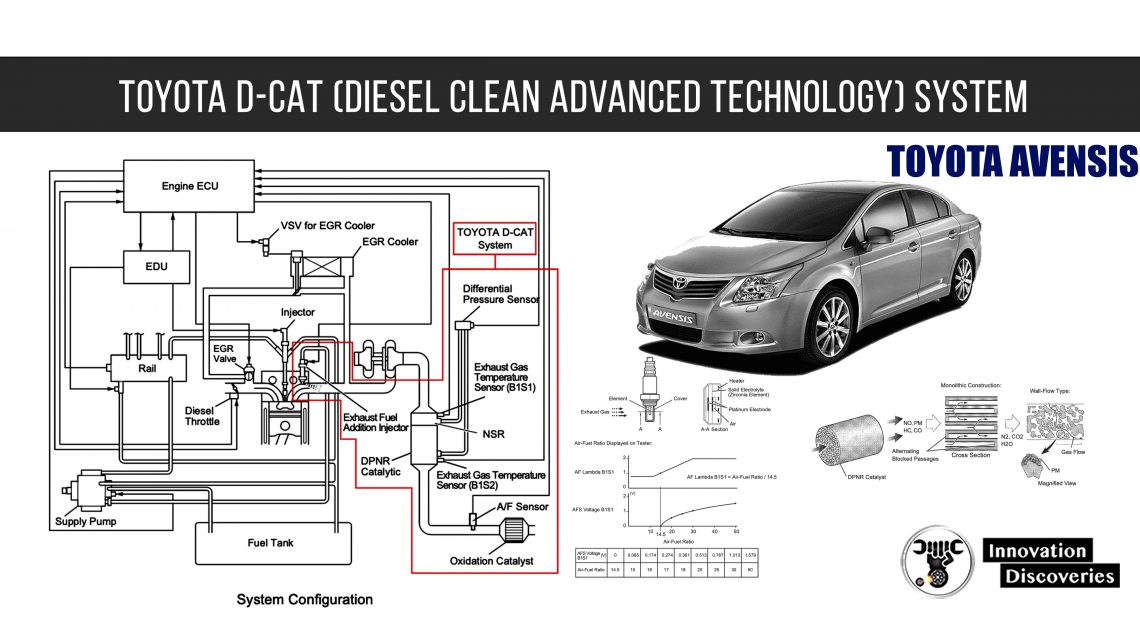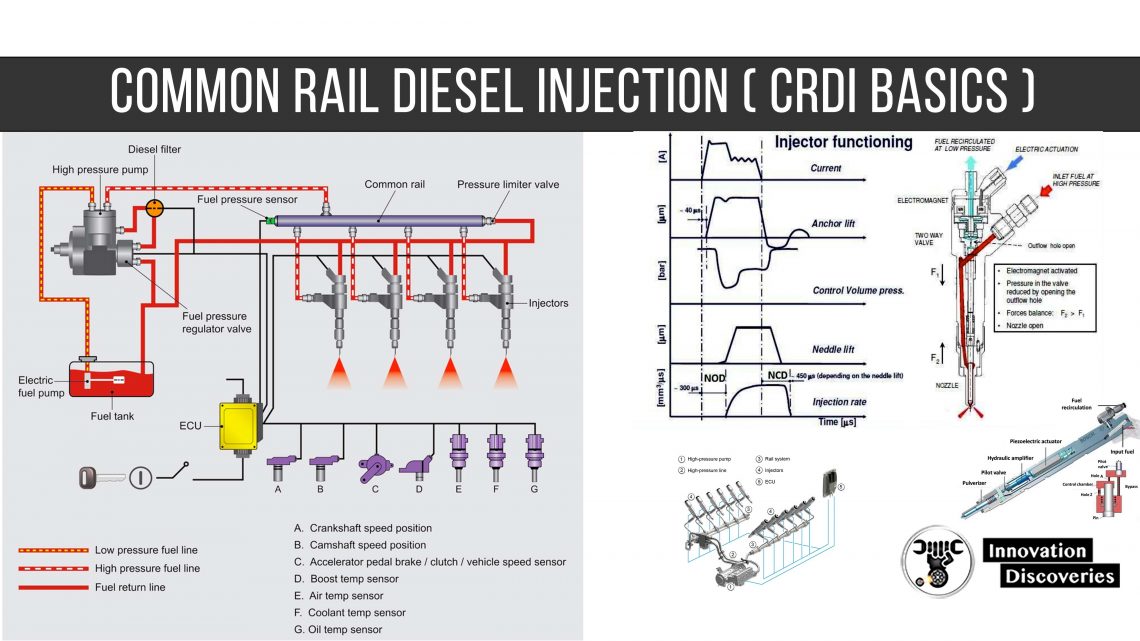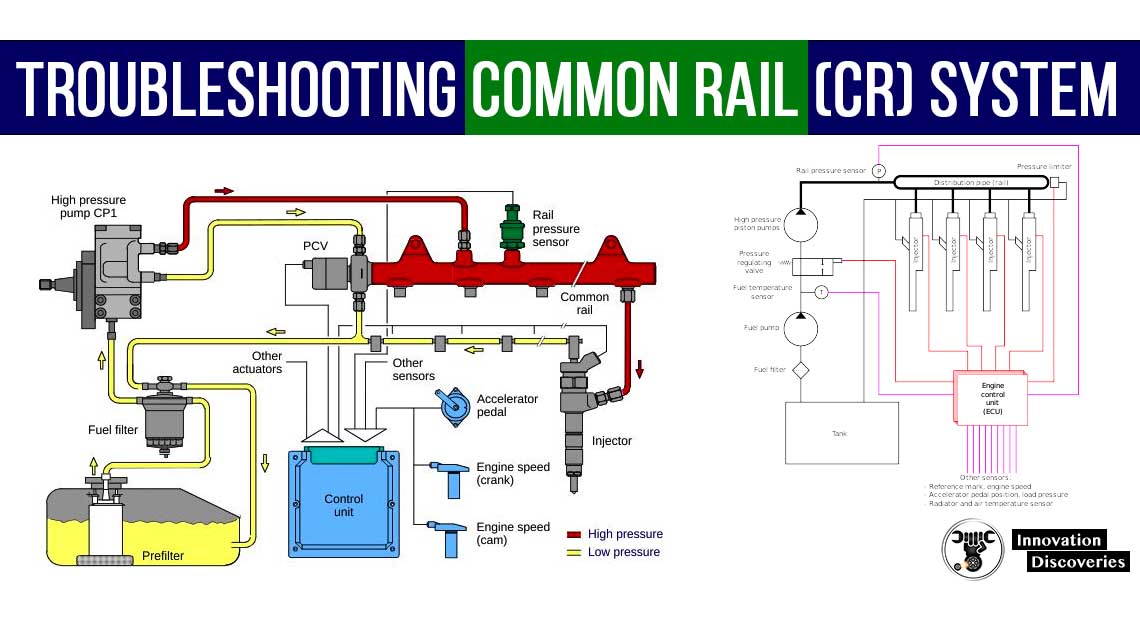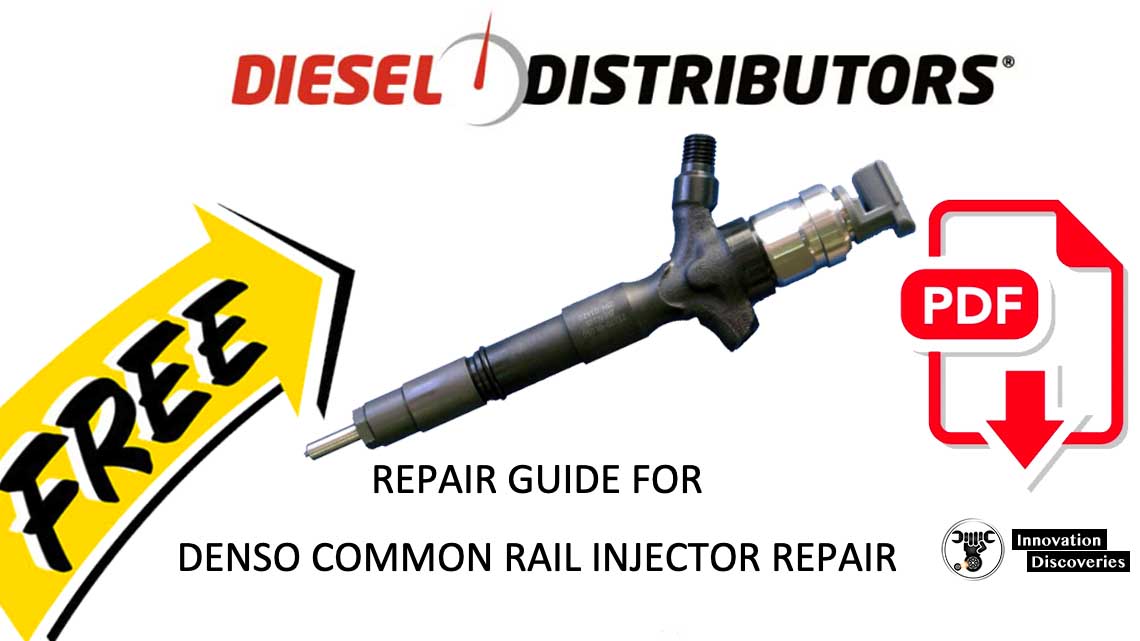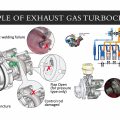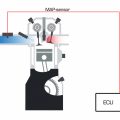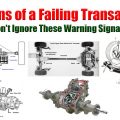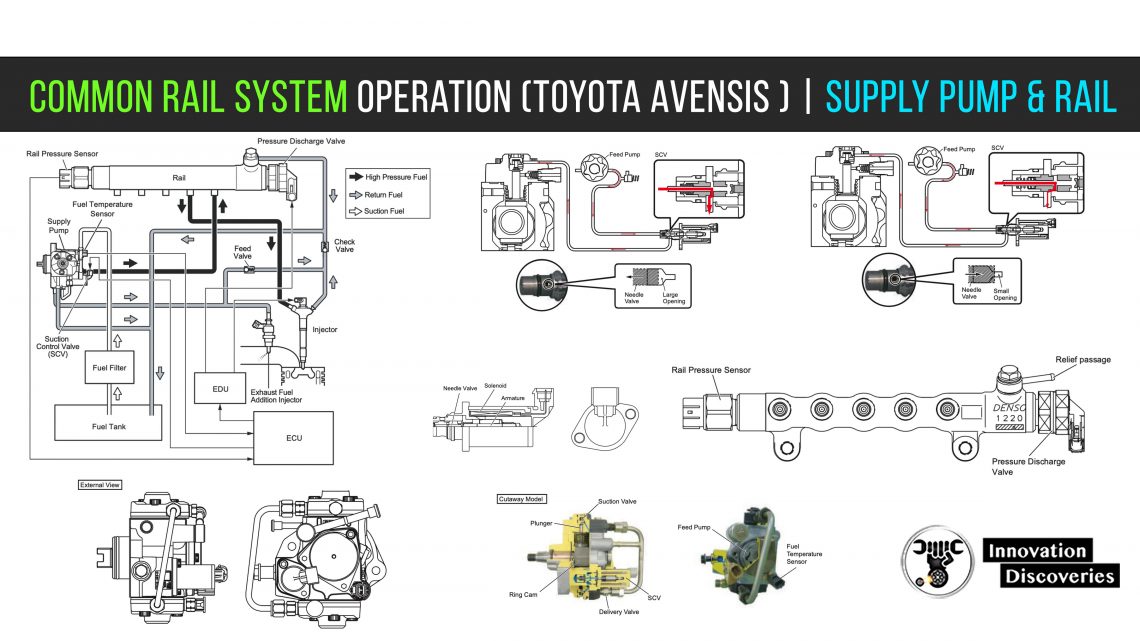
SYSTEM OUTLINE: Construction and Operation
2AD-FHV, 2AD-FTV, 1AD-FTV
The primary CRS components are shown in the figure below.
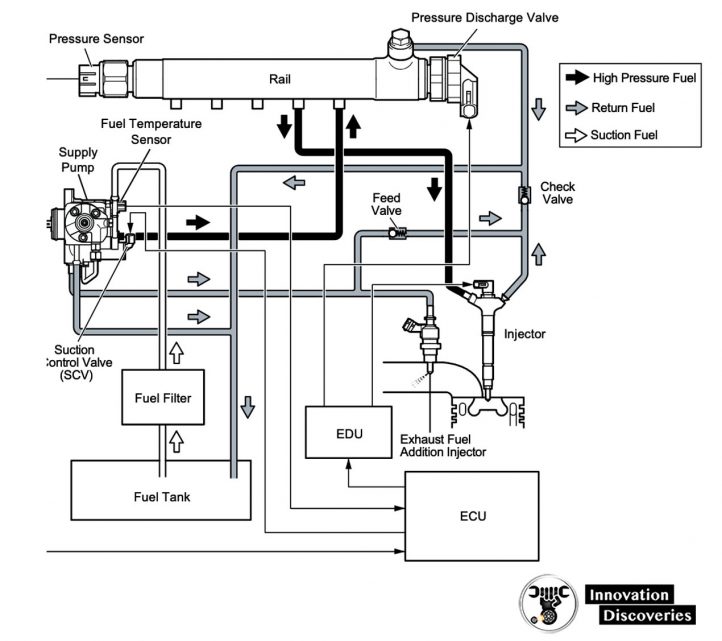
SUPPLY PUMP
The supply pump is equipped with an SV1 type suction control valve (SCV). The connector has changed from the conventional perpendicular type to a horizontal type.

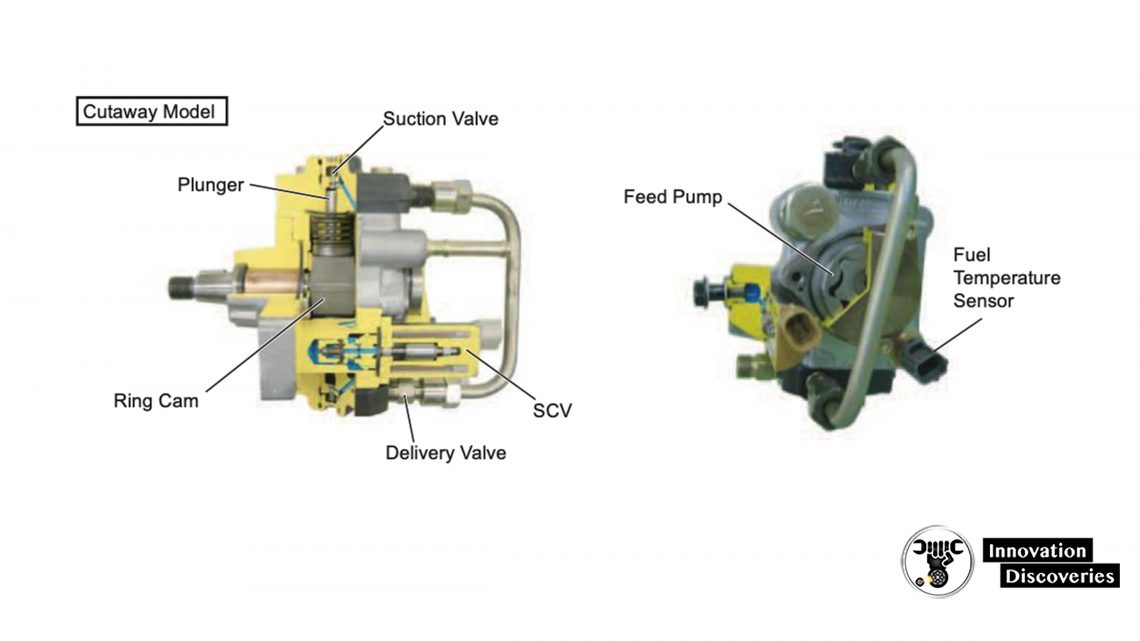
SCV
- The supply pump is equipped with a normally closed-type SCV.
- When the solenoid is energized, the needle valve is pressed upon (in the compact SCV, the cylinder is pulled upon) by the armature, completely opening the fuel passage and supplying fuel to the plunger. (Total quantity suctioned total quantity discharged)
- When power is removed from the solenoid, the return spring presses the needle valve back to the original position, closing the fuel passage.
- The solenoid is actuated by duty ratio control. Fuel is supplied in an amount corresponding to the open surface area of the passage, which depends on the duty ratio.
- The fuel is then discharged by the plungers.
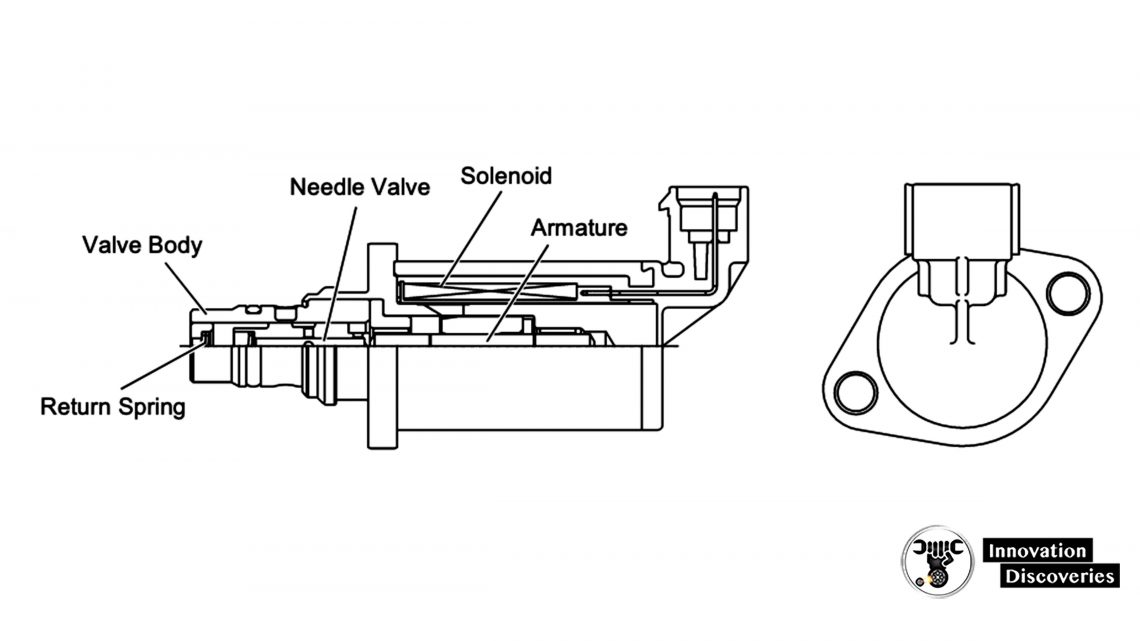
When the SCV energization duration (duty on time) is long
When the energization time is long, the average current flowing to the solenoid is large.
As a result, the needle valve is pushed out (in the compact SCV, the needle valve is pulled), creating a large valve opening.
Subsequently, the fuel suction quantity increases.
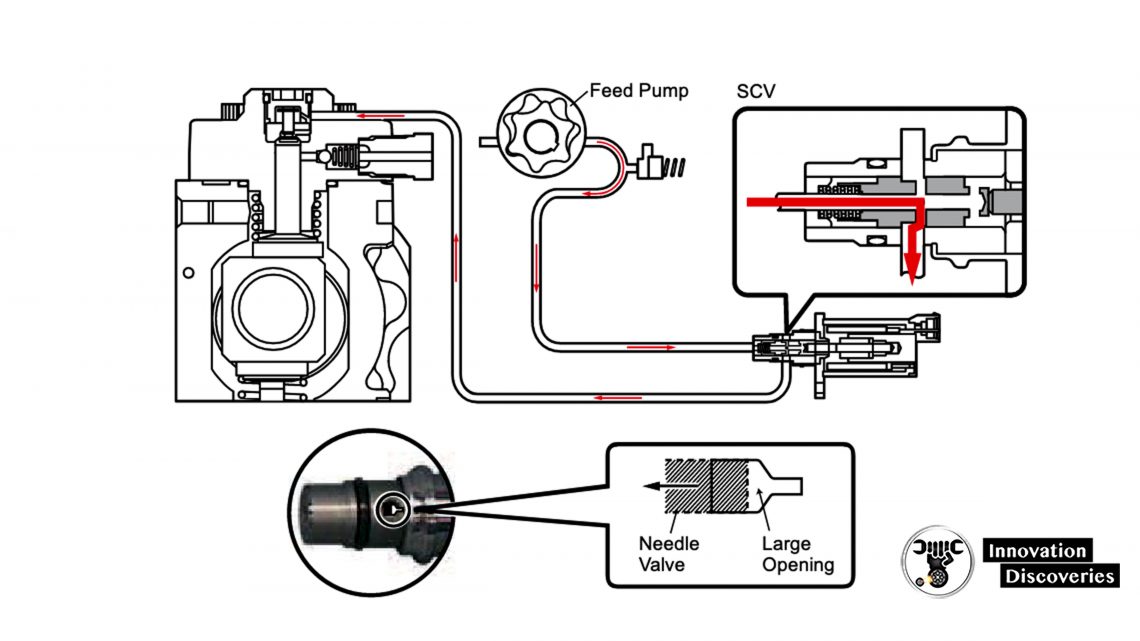
When the SCV energization duration (duty on time) is short
When the energization time is short, the average current flowing through the solenoid is small.
As a result, the needle valve is returned to the original position by spring force, creating a small valve opening. Subsequently, the fuel suction quantity decreases.

RAIL
The 2AD-FTV, 2AD-FTV, and 1AD-FTV are equipped with a pressure discharge valve.
Therefore, the appropriate engine ECU control and actuation circuit (EDU) has been designated to control the pressure discharge valve.
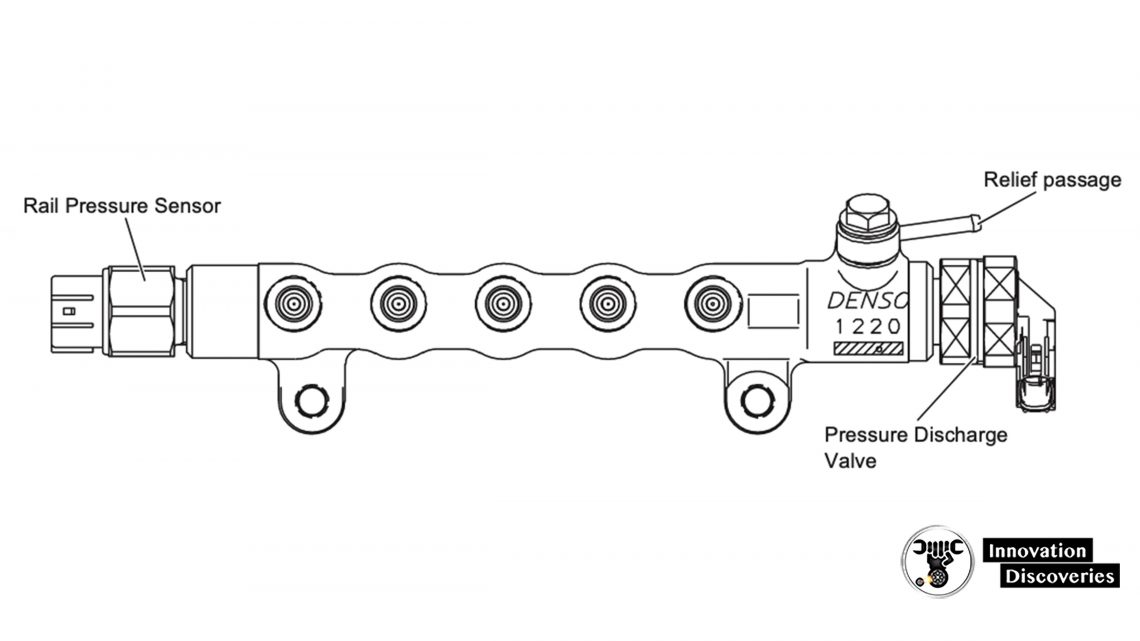
Rail Pressure Sensor
The rail pressure sensor detects fuel pressure within the rail and sends pressure signals to the ECU.
The rail pressure sensor is a Piezo resistance type semiconductor pressure sensor that uses the pressure added to a metal diaphragm, and the accompanying changes in electrical resistance to detect rail pressure.
As a backup during a failure, the rail pressure sensor has redundant systems for output voltage.
The output characteristics for the 2005 model year have been changed.

Discover More:
Read More About Common Rail System


